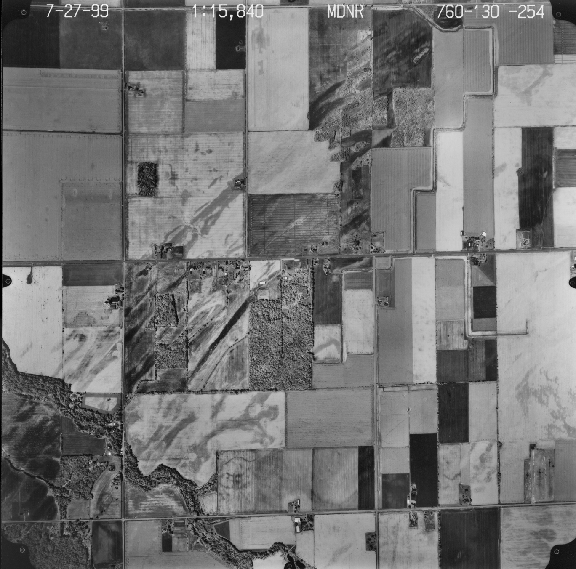BEACH RIDGES
The margins (beaches) of the vast proglacial lakes that once occupied Michigan during
glacial times left behind subtle evidence of their existence. If a beach was constantly
shifting positions on the landscape as water levels in the lake frequently fell or rose,
it may have left no detectable "signature". However, if a beach stabilized in
one position for some time, it often deposited sand in the surf zone and, farther away
from the water line, etched a "notch" or ridge into the preexisting landscape.
Today, the flat lake plains of the Thumb and Monroe areas have numerous beach ridges,
which are often marked by sandy soils. Much of the Detroit area is built on a flat, wet
lake plain; in such a landscape the few dry, sandy beach ridges were preferred sites of
settlement.
On the lake plains of Michigan, many beach ridges can be
observed. Beach ridges are landforms that form in the coastal zone, when the lake
level stabilizes for a brief period (perhaps a few decades or more). They are
typified by a step-like terrace, sandy soils, and because they are usually drier than the
surrounding flat, wet lake plain, they often are utilized as cemetaries! The image
below is a few km north of Ovid-Elsie, at the Warren beach of Glacial Lake Saginaw.
As you can see, these features are subtle and not easily observed on the ground. However, they do show up nicely from the air, as the aerial photograph below shows. The image is from the Saginaw lake plain in Tuscola County. Note the many subtle beach ridges that traverse the landscape.

Click here for print size image (333 kb) |
Click here for full size image (5.0 MB)
This material has been compiled for educational use only, and may not be reproduced without permission. One copy may be printed for personal use. Please contact Randall Schaetzl (soils@msu.edu) for more information or permissions.